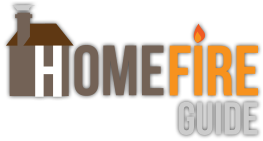Also called solid mineral-fuel stoves, multi-fuel stoves can burn wood, smokeless fuel and coal.
There are differences in the ways these fuels burn, and not all multi-fuel stoves are optimised for burning all compatible fuels equally efficiently.
How different fuels burn
Coal needs air to reach it from below through a grate. Most multi-fuel stoves have a riddling plate that allows you to remove any ash that’s built up, letting more air through from underneath.
Wood, on the other hand, burns best when sitting on a bed of ash (also called a firebox, which is where the fuel burns), with air circulating from the top.
Because of these differences, a multi-fuel stove may not be optimised for burning both types of fuel. In arecent survey of 1,199 from Which? members in September 2013, 45% have a wood burning stove and 35% have a multi-fuel stove. But the Stove Industry Alliance (SIA) found that 77% of people that have a multi-fuel stove only burn wood.
If you are planning on only burning wood, getting a dedicated log burner is advisable. However, if you think you may not have regular access to wood and so would like the option to burn coal occasionally, then a multi-fuel stove is a good option. Some stoves have a control allowing you to circulate more air from above or below, depending on the type of fuel.
Ideally, it’s best to work out what type of fuel you want to burn and what you have access to first, and then base your buying decision on that. If you live in a smoke controlled area, you will need a Defra-exempt stove or to only burn smokeless fuel on a multi-fuel stove.
Also keep in mind that if you are buying a stove to be more eco-friendly, coal isn’t a carbon-neutral fuel like wood.

